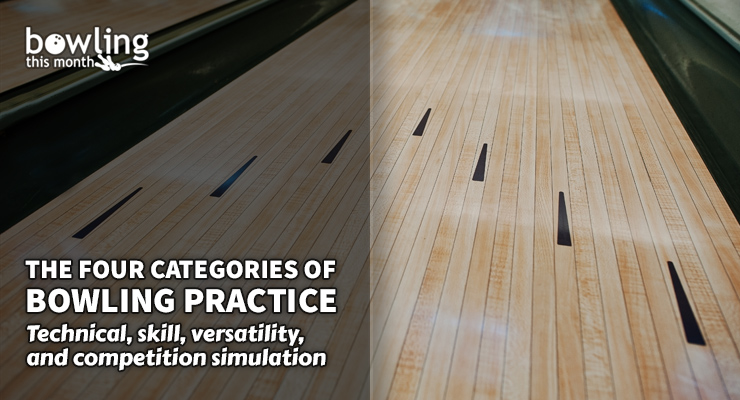Practice makes perfect, or so the saying goes. But, there are lots of people that practice a lot who never get anywhere near perfect. Without going into the discussion of “perfection,” the key to effective practice is having the right kind of training for what you’re looking to improve.
Essentially, practice serves two purposes:
- correction or development of your technique and skills, and
- applying what you’ve learned.
Depending on the purpose of your practice, you may even choose to bowl for score as part of it. Within these two purposes, we can further break practice down into four categories:
- Technical practice
- Skill practice
- Versatility practice
- Competition simulation
Let’s take a look at each of these in more detail below.
Technical practice
This is the most common form of practice for people working on their games. The goal of a technical practice is to correct or develop the fundamental elements of the game. This includes footwork, body position, swing direction and follow through, release, etc. All the things that are relatively stable would be included as a part of technical practice. The physical delivery aspects that a bowler will manipulate, like ball speed or loft, belong as a part of skill practice, which we’ll discuss shortly.
A technical practice is generally one where the focus should be on keeping a very low intensity/stress level, with a very high volume of repetition. This means drills. In previous articles, I’ve mentioned drill ...
This article is only available to Bowling This Month subscribers. Click below to get instant access to this article and all of our other premium instructional content.
Subscribe to Bowling This Month
Already a Bowling This Month subscriber? Click here to log in.
Image Credits: Bowling lane image (©iStock.com/ASphotowed) is licensed for use by BTM and is the copyrighted property of its original creator.
